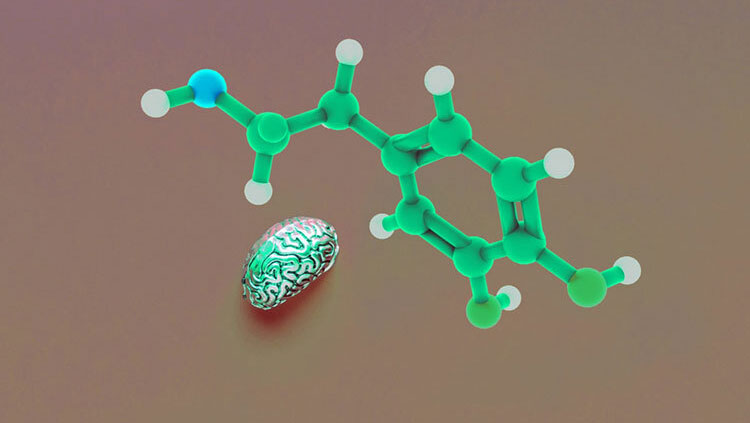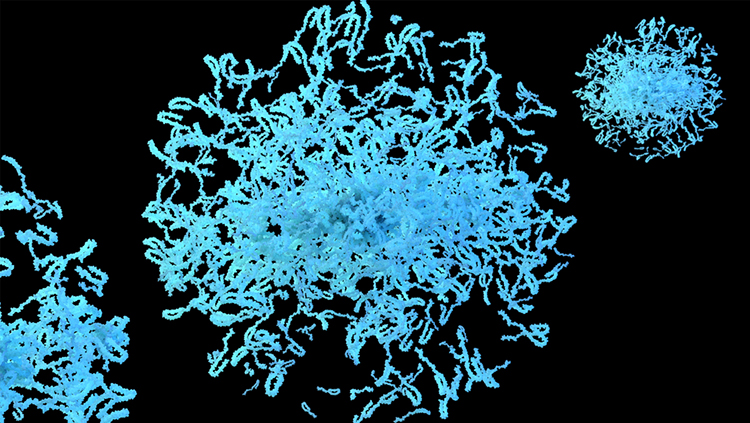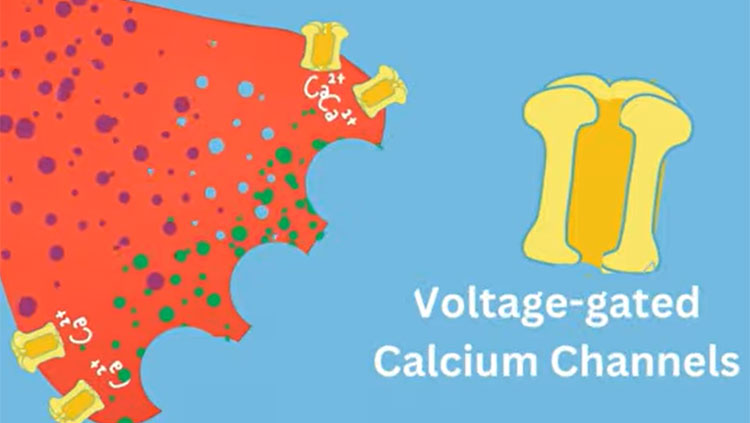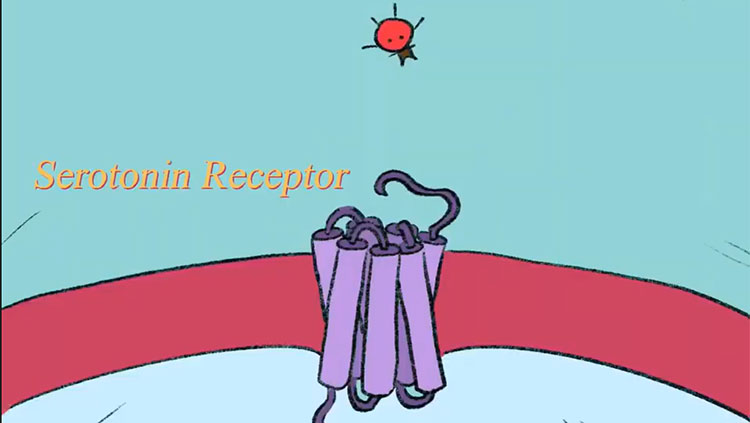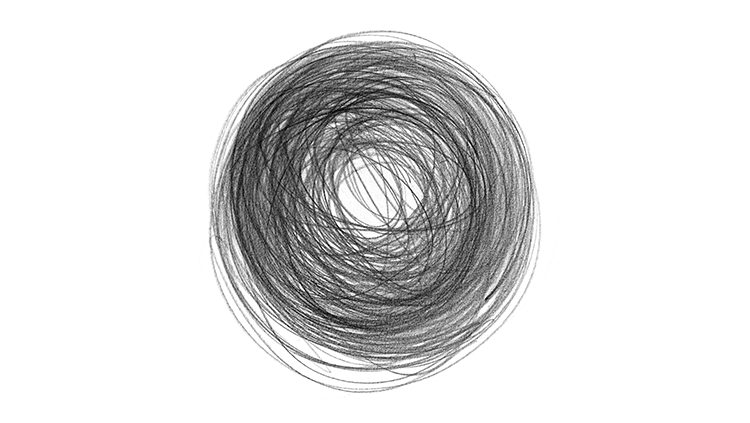The Rewards of Dopamine’s Complexity
- Published10 Jun 2025
- Author Nandakumar Narayanan
- Source BrainFacts/SfN
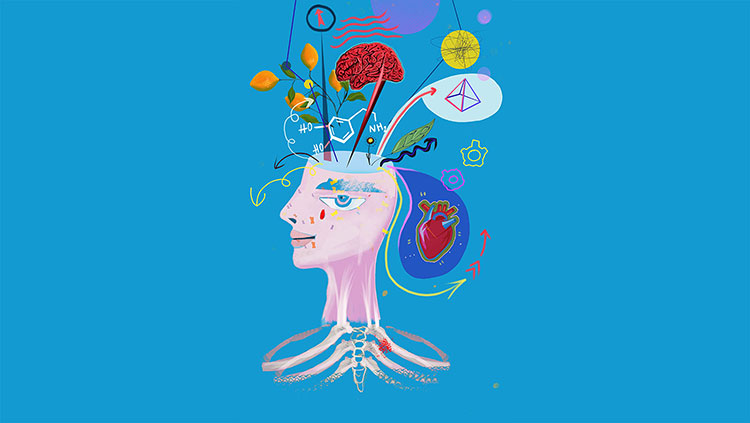
“Today at school, we heard about dopamine — the reward hormone,” my 11-year-old said, barely looking up from playing Mario Kart on their Nintendo Switch.
I groaned.
In my clinics at the University of Iowa, I prescribe huge quantities of dopamine for my patients with Parkinson’s disease, an illness that devastates movement and cognition. My kid’s fact-of-the-day wasn’t wrong, but it wasn’t right either. The brain doesn’t make it easy to understand its complexity. The adult human brain is packed with 86 billion neurons, each with thousands of connections, leading to trillions of synapses. Our brains certainly never planned on their secrets being simple enough to be taught in elementary school, much less compressed into pithy social media posts or peddled by pseudoscience influencers.
My kid was not to blame (this time); they merely articulated the popular view on dopamine. Still, the dark shadow of this perspective is now baked into search engines and AI and reverberates through social media, leading to cascading nonsense such as “dopamine hits” and “dopamine detox.”
What, then, does dopamine do? Dopamine acts more as a modulator than an instigator of neuronal function. Indeed, puffing dopamine onto a neuron doesn’t do much. However, if the neuron is already firing, then dopamine can do a lot to change that neuron’s firing rate and pattern. Dopamine is released from tens of thousands of neurons deep in the brain and works with a cacophony of other molecules to modulate how neurons fire.
How dopamine functions depends on the context of where researchers are studying it. If it’s outside the brain and acting as a hormone, it can affect blood pressure and gut function. In the outer layer of the brain called the cortex, dopamine impacts cognitive function. In another part of the brain called the basal ganglia, dopamine powerfully modulates motor programs, which is why people with Parkinson’s disease have slow movements. Finally, in another region called the nucleus accumbens, dopamine modulates reward and mood. There have been several attempts to find unified theories of dopamine’s role, but these are the fastest way to a metaphorical bench-clearing brawl in a room full of brain scientists.
However, biology is the ultimate MacGyver (for Gen Alpha: MacGyver was a 1980s TV protagonist who could fashion a hot-air balloon from garden implements), using the same molecules and motifs in different ways. For example, dopamine is found in fruit flies, roundworms and songbirds, where it modulates locomotion, appetite, and learning, respectively. Our brains are hyper-efficient. Indeed, my children take standardized tests powered by fruits and vegetables, and AI would require a trainload of coal to accomplish the same feat. It is not surprising our ever-resourceful brains find myriad reuses for a single molecule such as dopamine.
We keep learning just how many things one molecule can do. In a famous series of experiments, scientists mapped the lobster stomach’s nervous system, presumably chosen because it contained a tractable 30 neurons. This network generates rhythms, but neuromodulators like dopamine wildly reconfigure these rhythms. In mammals and humans, we and other researchers have found that dopamine modulates brain rhythms, and dopamine release may itself be rhythmic. Thus, dopamine can have complex effects on networks of neurons.
Given all this, it is a bit farcical to link human behavioral repertoires like reward to any single molecule. Moreover, a modulator like dopamine is more like the buttons on my 11-year-old’s Nintendo Switch — what they do depends on the game. For dopamine, like those buttons, context matters. As neuroscientists, we have a long way to go, but we are making progress (particularly if the NIH keeps funding us). It’s critically important for our patients with Parkinson’s disease, addiction, schizophrenia, and depression that we find answers.
But this might be one of the reasons scientists are often drawn to the siren song of reducing brain areas to single explanations. I’ll admit its success. The previous century’s localizing neurologists pinned a panoply of human behavior — language, movement, feeling, emotion, reasoning, compassion, recognizing Jennifer Aniston’s face — on specific brain regions.
When I see patients, I can tell them the reason they can’t move or speak is because they have a problem in a specific location I can point to on a brain scan. Reductionism helps us teach our students about the brain. Brain science has helped my children as they learn about their emotions in school. They can blame their amygdala for why they kicked someone in line, or for their teenage angst. My 16-year-old tried to convince me: “It wasn’t me; it was my developing prefrontal cortex!” I didn’t buy it — much.
But brain scientists can be recalcitrant reductionists. Blaming a disease on these ubiquitous neurotransmitters is a little like saying the Nintendo Switch doesn’t work because it’s missing electricity. Scientists are tempted to reduce brain circuits to glib equations that explain a small amount of variance under limited conditions because scientists with the most palatable explanations — along with those who yell the loudest — get the most money, trainees, and lab square footage. Those of us with a touch of longing for the spotlight might ham up our findings for an eager reporter and Voila! dopamine is the reward hormone.
However, I can’t help wondering if there are three big benefits of better communicating the dazzling complexity of our brains. First, I think teachers and students might understand more than we give them credit for. They certainly can learn that neural circuits can do multiple things. This concept will prepare them for a world where we can map those thousands of connections among millions of neurons, where molecules like dopamine modulate multiple things, and equip them to think critically about the flood of scientific information (and misinformation) coming their way.
Second, scientific nuance helps when I talk to my patients about the daunting complexity of their disease. Most Parkinson’s disease patients believe dopamine affects their movements. When I draw dopamine neurons with their projections to mood and cognitive areas (and yes, reward systems), I can see them suddenly understand their multifaceted disease and why their lives are so hard on so many levels. This knowledge helps them meet the challenge that is their daily lives.
Third, and most importantly, it is all too easy for us humans to forget the staggeringly mysterious organ located between our ears. Considering this complexity might cause us, if only for the briefest of moments, to better appreciate the marvel that stares back at us in the selfie-camera.
CONTENT PROVIDED BY
BrainFacts/SfN
References
De Deyn, P. P., Marescau, B. & MacDonald, R. L. (1990). Epilepsy and the GABA-hypothesis a brief review and some examples. Acta Neurol Belg 90, 65–81. https://pubmed.ncbi.nlm.nih.gov/2164316/
Thomasy, H. (2025). Debunking the Dopamine Detox Trend. The Scientist. https://www.the-scientist.com/debunking-the-dopamine-detox-trend-72036.
Jankovic, J. Parkinson’s disease: clinical features and diagnosis. (2008). Journal of Neurology, Neurosurgery & Psychiatry, 79(4), 368–376. https://doi.org/10.1136/jnnp.2007.131045
Jeong, H., Taylor, A., Floeder, J. R., Lohmann, M., Mihalas, S., Wu, B., Zhou, M., Burke, D. A., & Namboodiri, V. M. K. (2022). Mesolimbic dopamine release conveys causal associations. Science (New York, N.Y.), 378(6626), eabq6740. https://doi.org/10.1126/science.abq6740
Kasdin, J., Duffy, A., Nadler, N., Raha, A., Fairhall, A. L., Stachenfeld, K. L., Gadagkar, V. (2025). Natural behaviour is learned through dopamine-mediated reinforcement. Nature, 641, 699–706. https://doi.org/10.1038/s41586-025-08729-1
Krok, A. C., Maltese, M., Mistry, P., Miao, X., Li, Y., & Tritsch, N. X. (2023). Intrinsic dopamine and acetylcholine dynamics in the striatum of mice. Nature, 621(7979), 543–549. https://doi.org/10.1038/s41586-023-05995-9
Marder E. (2012). Neuromodulation of neuronal circuits: back to the future. Neuron, 76(1), 1–11. https://doi.org/10.1016/j.neuron.2012.09.010
McMillen, A., & Chew, Y. L. (2024). Neural mechanisms of dopamine function in learning and memory in Caenorhabditis elegans. Neuronal Signaling, 8(1), NS20230057. https://doi.org/10.1042/NS20230057
Narayanan, N. S. & Albin, R. L. (2022). Cognition in Parkinson’s Disease. Elsevier, Acad. Press.
Narayanan, N. S., Jourahmad, Z., Cole, R. C., & Cavanagh, J. F. (2024). Cognition falters at ~4 Hz in Parkinson's disease. Trends in Cognitive Sciences, 28(9), 789–791. https://doi.org/10.1016/j.tics.2024.06.002
Sanacora, G., Treccani, G., & Popoli, M. (2012). Towards a glutamate hypothesis of depression: an emerging frontier of neuropsychopharmacology for mood disorders. Neuropharmacology, 62(1), 63–77. https://doi.org/10.1016/j.neuropharm.2011.07.036
Schultz, W., Dayan, P., & Montague, P. R. (1997). A neural substrate of prediction and reward. Science (New York, N.Y.), 275(5306), 1593–1599. https://doi.org/10.1126/science.275.5306.1593
The MICrONS Project. (2025, April 9). Nature. Retrieved April 20, 2025 from https://www.nature.com/immersive/d42859-025-00001-w/index.html
Waddell S. (2013). Reinforcement signalling in Drosophila; dopamine does it all after all. Current Opinion in Neurobiology, 23(3), 324–329. https://doi.org/10.1016/j.conb.2013.01.005
What to Read Next
Also In Genes & Molecules
Trending
Popular articles on BrainFacts.org



